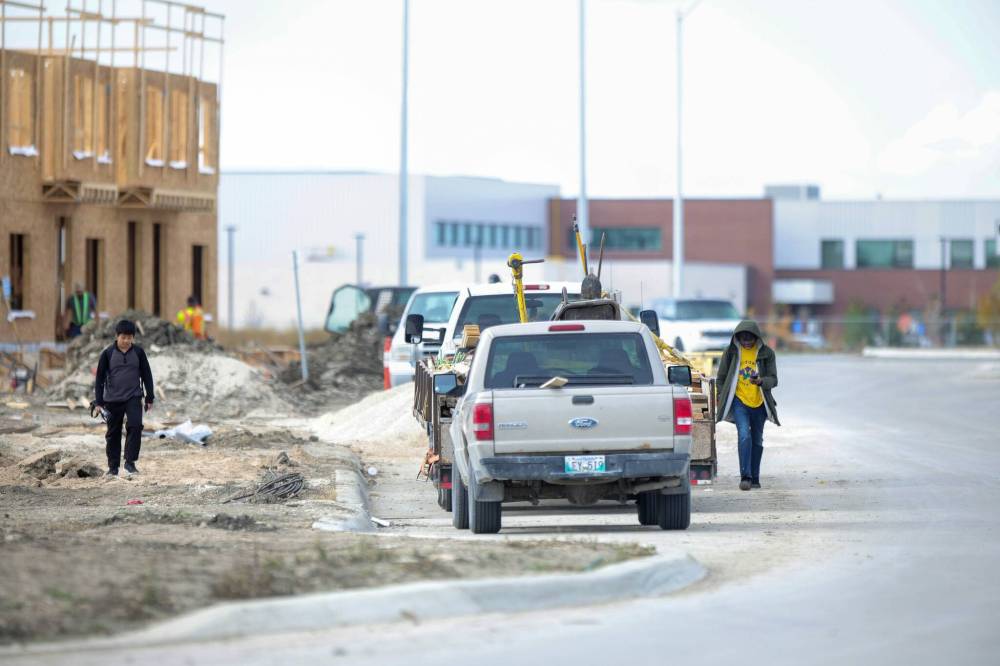Let kids walk — and clear the way for them
Advertisement
Read this article for free:
or
Already have an account? Log in here »
To continue reading, please subscribe:
Monthly Digital Subscription
$0 for the first 4 weeks*
- Enjoy unlimited reading on winnipegfreepress.com
- Read the E-Edition, our digital replica newspaper
- Access News Break, our award-winning app
- Play interactive puzzles
*No charge for 4 weeks then price increases to the regular rate of $19.00 plus GST every four weeks. Offer available to new and qualified returning subscribers only. Cancel any time.
Monthly Digital Subscription
$4.75/week*
- Enjoy unlimited reading on winnipegfreepress.com
- Read the E-Edition, our digital replica newspaper
- Access News Break, our award-winning app
- Play interactive puzzles
*Billed as $19 plus GST every four weeks. Cancel any time.
To continue reading, please subscribe:
Add Free Press access to your Brandon Sun subscription for only an additional
$1 for the first 4 weeks*
*Your next subscription payment will increase by $1.00 and you will be charged $16.99 plus GST for four weeks. After four weeks, your payment will increase to $23.99 plus GST every four weeks.
Read unlimited articles for free today:
or
Already have an account? Log in here »
Hey there, time traveller!
This article was published 27/10/2023 (784 days ago), so information in it may no longer be current.
For many Manitobans, memories of morning walks to school are just that — memories of walks. Or bike rides. Backpack weighted with lunch and the previous night’s homework, friends alongside to converse en route to class.
It sounds casual and common. But today, it’s anything but.
On Monday, the Free Press reported about the particular plight of students at Pembina Trails Collegiate and Bison Run School, who are trying to get to class amid a busy construction zone as their neighbourhood is assembled around them. Facing long stretches of road without sidewalks, and vehicle congestion along the roads, students who pound the pavement to class are up against an obstacle course.

RUTH BONNEVILLE / WINNIPEG FREE PRESS
There is no sidewalk along Frontier Trail south of two new schools, Bison Run School and Pembina Trails Collegiate.
It should be said that those students face unique circumstances. Eventually the construction will be over, sidewalks will be installed, and their path will be safer. However, it brings to mind just how rare it is that students walk and bike to school at all — and what discourages them from doing so, or their parents from allowing it.
Data released by the federal government in January (summarizing the results of a 2017/28 Health Behaviour in School-Aged Children Study) show that of Canadian students surveyed, only 22 per cent walk, and four per cent bike to school.
Participaction’s October, 2022 “report card” on physical activity among children says 46 per cent of kids aged five to 17 are active in their commute — though that includes students who only partially walk or bike.
The most brutal revelation in the federal data is this: of kids who live less than five minutes from school, fewer than half — 47 per cent — walk or bike to class.
It’s not as surprising as it should be. While sidewalks are typically installed in the immediate vicinity of a school, the surrounding streets can lack them — particularly among the winding bays and cul-de-sacs which comprise a modern city subdivision. Without dedicated, pedestrian-friendly pathways to take straight from home, students must compete for road space with buses, bikes, cars, and ever-enlarging SUVs and pickup trucks, practically until they reach the school grounds.
Aside from that, there also may be a perception that letting children walk or bike to school is unsafe, given the many sidewalk-less blocks (or construction zones) a student may need to traverse to reach their destination.
It’s a vicious cycle. Multi-car households drive their children everywhere, adding to traffic congestion in neighbourhoods with narrow streets and no sidewalks. Parents see the congestion, look at their youngster, and fear the worst when sending them along down the street. So, in the car they go, for a three or four-block drive to school. Another vehicle hits the road.
It’s time for a rethink on how we function within our neighbourhoods. Letting children walk and bike to school, and indeed encouraging them to do so, empowers them to fully take in their surroundings, to see their neighbourhood as more than a series of waypoints they visit in between car rides. It relieves car congestion on the pathways surrounding schools at a busy time for commuters. This is all on top of contributing to a more active and healthy lifestyle.
At the level of city hall, it would be a welcome change if developers were required to have proper pedestrian pathways when neighbourhoods are built. That will likely be an uphill battle, as modern homeowners prize maximum frontage. There is likely nothing to be done about the streets which are already paved.
But putting active transportation first going forward will serve all.




